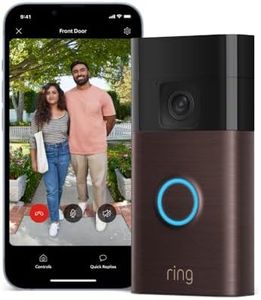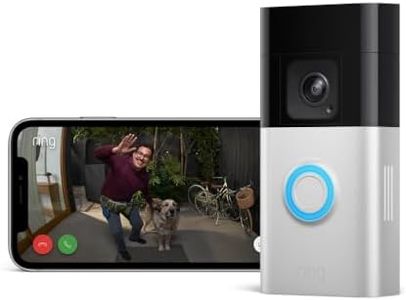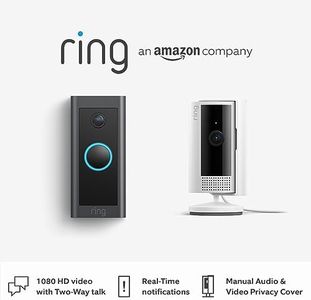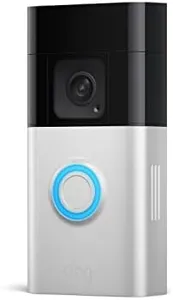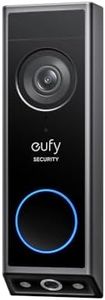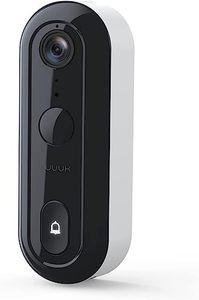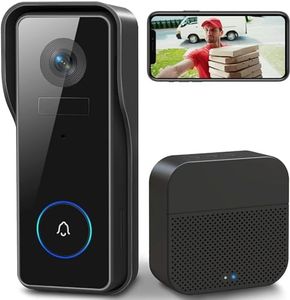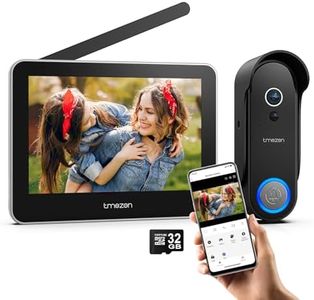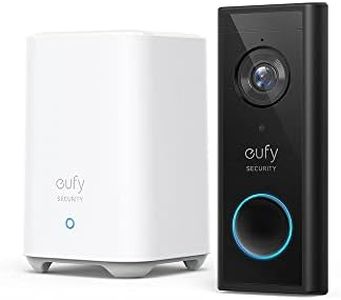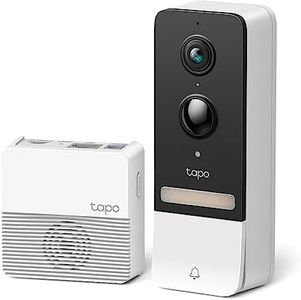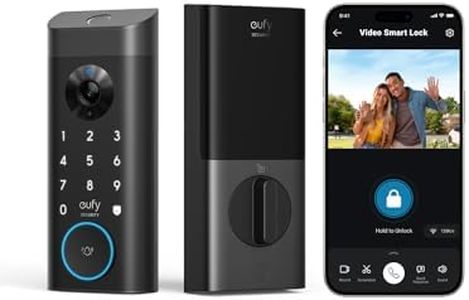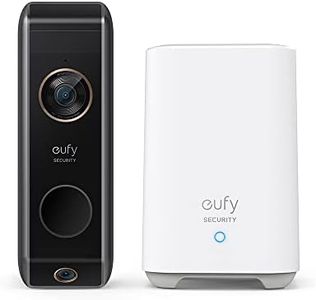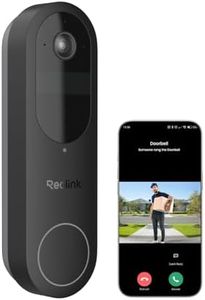We Use CookiesWe use cookies to enhance the security, performance,
functionality and for analytical and promotional activities. By continuing to browse this site you
are agreeing to our privacy policy
10 Best Camera Doorbells
From leading brands and best sellers available on the web.By clicking on a link to a third party's website, log data is shared with that third party.
Buying Guide for the Best Camera Doorbells
Shopping for a camera doorbell is a great way to add security and convenience to your home. The right model will let you see and communicate with visitors at your door, even when you're not home. To find the best camera doorbell for your needs, focus on how you'll use it—do you want simple alerts, two-way talk, or advanced security features? The variety on the market can be overwhelming, so understanding the main specs will help you narrow your choices and pick a doorbell that matches your lifestyle.Video ResolutionVideo resolution describes how clear and detailed the footage from your doorbell camera will be. It's most commonly expressed in terms like 720p (HD), 1080p (Full HD), or even 2K and above. Lower resolutions, such as 720p, offer basic clarity for close-up identification. Mid-range resolutions like 1080p are the standard and provide a good balance of detail for seeing faces and packages at your door. Higher resolutions, such as 2K or 4K, offer excellent detail for a wider area and are useful if you want to closely monitor activity further from your door. Choose higher resolution if you prioritize clear images for identification or if your entryway has a wider viewing area.
Field of ViewField of view (FOV) measures how much area the camera can see, given in degrees. A narrow field (under 120°) covers just the space directly in front of your door, while a moderate field (between 120° and 160°) captures both your doorstep and some of the sides. Wide FOV (over 160°) is useful for seeing your entire porch or multiple entry points. If you have a small entryway a standard FOV will suffice, but if your door faces a driveway or a large porch, or you want to capture side views, a wider FOV is preferable.
Night VisionNight vision enables your camera doorbell to capture clear video in low light or complete darkness. Some models use basic infrared LEDs for black-and-white night footage, while others use advanced tech for clearer, even color night images. If you live in a well-lit environment or have a lot of outdoor lights, simple night vision might be enough. For users with dark entryways or those who want clear evidence at night, look for advanced or color night vision capabilities.
Power SourceCamera doorbells can be powered by batteries, your existing doorbell wiring, or can be plugged in. Battery-powered units are easier to install and move, but require regular recharging or battery changes, typically every few months. Hardwired doorbells connect to your home’s electrical system, offering a steady power source and less maintenance, but the installation is more involved. Plug-in options are rare but convenient if there’s an outlet nearby. Choose a power source based on your DIY skills and how often you're willing to perform maintenance.
Two-Way AudioTwo-way audio lets you talk to visitors through your smartphone or indoor speaker using a built-in microphone and speaker on the doorbell. This is important for answering the door remotely, giving delivery instructions, or deterring unwanted visitors. Most camera doorbells now include this, but the sound quality and volume can differ. If you expect to use this feature often, check for clear and reliable audio performance.
Motion Detection and AlertsThis feature allows the doorbell to detect movement and send alerts to your device when someone approaches. Some models have basic motion sensors with fixed zones, while others let you set custom activity zones and sensitivity to reduce false alarms. More advanced options can recognize people, animals, or packages. If you’re in a busy area or have frequent traffic close to your door, choose models with customizable motion zones or smart detection to avoid constant, unnecessary alerts.
Storage OptionsStorage options determine how your video recordings are saved and accessed. Some doorbells offer free or subscription-based cloud storage, while others have a local storage slot (like a microSD card). Cloud storage keeps videos secure and accessible from anywhere, but often comes with fees and privacy considerations. Local storage avoids ongoing costs but can be lost if the device is damaged or stolen. Pick based on your comfort with subscriptions, privacy preferences, and how important it is to have easy access to past recordings.
Smart Home IntegrationMany camera doorbells can work with smart home systems like Amazon Alexa, Google Assistant, or Apple HomeKit. This lets you see live video on smart displays, use voice commands, or create security routines (like turning on lights when motion is detected). If you already use smart devices at home, pick a doorbell compatible with your system for a seamless experience.
Weather ResistanceSince camera doorbells are mounted outside, they need to withstand the elements. Weather resistance ratings (like IP65 or IP66) indicate protection against rain, dust, and temperature extremes. If you live in an area with harsh weather, high humidity, or lots of dust, look for high weather resistance ratings to ensure durability and reliability year-round.
